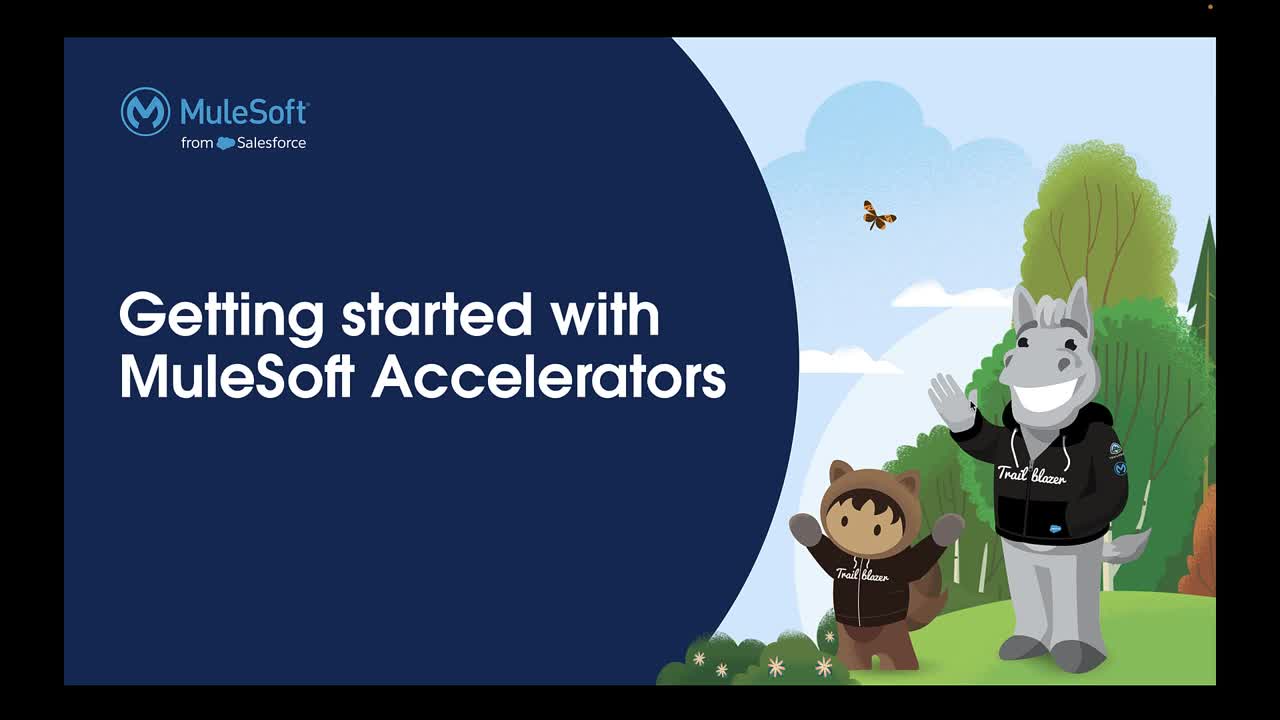Getting Started with MuleSoft Accelerators
This guide helps you configure your local build environment to download, modify, and deploy accelerator assets successfully.

Quick Start
To get started:
-
Set up your local build environment with the required software and Maven build configuration.
-
Download and configure the assets required for the use case(s) you wish to implement. Some use cases will require changes to the systems being integrated (for example, SAP, Salesforce Service Cloud, etc.) Be sure to read and follow the instructions specified for each accelerator carefully. This also applies when using only a few select assets instead of implementing complete use cases.
-
Deploy the applications individually to your own CloudHub instance, either manually or by using simple Maven commands. There may also be some helper configuration files available for deploying multiple components at once.
Refer to the sections below for more details on obtaining and using accelerator assets.
Asset Types
The following table provides more information about the types of accelerator assets provided and how they fit into the overall solution.
| Type | Purpose | Example |
|---|---|---|
API Spec Fragments |
Shared RAML specifications reused by multiple APIs. These define standard characteristics, data types and response codes common across most APIs. |
Accelerator Global Resources |
REST APIs |
RAML specifications describing the resources and methods an API makes available to consumers. They are categorized into layers - System, Process, Experience - as per MuleSoft’s API-led approach. |
Accelerator OMS System API |
Templates |
Runtime implementations of individual APIs and other integrations. These must be customized and deployed to your own Mule runtime environment (for example, CloudHub) to implement desired use cases. |
Accelerator OMS System API - Implementation Template |
Custom assets |
Documentation and other downloadable components that do not fit into other categories. |
Accelerator POM Parent - Source |
Obtaining Accelerator Assets
All accelerator assets are available from the main Anypoint Exchange site and are freely downloadable by customers with current subscriptions. Refer to the sections in the page navigation menu on the left for more information about configuring, building, and deploying these assets.
The following instructions assume you have already configured your Maven settings.xml file according to the build environment configuration guide.
Import Directly into Anypoint Studio
Import from Exchange
All accelerator templates can be imported into Anypoint Studio directly from Exchange if your Anypoint credentials have been provided; refer to the Studio documentation for more details.
-
From Studio, open the Exchange window.
-
If prompted, log in to Anypoint Exchange.
-
Select the
Provided by MuleSoftview. -
Click the Asset type selector, and then choose Templates.
-
Copy and paste the title of this API into the Search field and press Enter on your keyboard.
-
Click on the desired result to open the home page for the asset.
-
Click on the Open icon to import the asset into the current workspace.
If it appears, you can safely cancel out of the Update your Workspace dialog as well as the subsequent Are you sure? prompt: our templates will work correctly with or without the suggested changes.
Download and Import Manually to Anypoint Studio
The following instructions assume you are viewing this page from your browser:
-
Click the Download button and save the template archive to your local file system.
-
In Studio, ensure the current perspective is set to
Mule Design. -
Right-click in an empty area in the
Package Explorerand select Import.... -
In the select dialog, expand the Anypoint Studio folder.
-
Choose the
Packaged mule application (.jar)option and click Next >. -
Enter the full path name of the downloaded jar file or select from the file browser.
-
Remove the version and
mule-application-templatesuffixes from the project name, if desired. -
Click Finish to import the project.
As above, you can safely cancel out of the Update your Workspace dialog, if prompted.
Import into Anypoint Code Builder
To import into Anypoint Code Builder, visit Importing Projects into the IDE.
Next Steps
Ensure your Build Environment is configured correctly before attempting to import or deploy any assets. Also refer to the Application Deployment, Application Testing and Additional Customizations pages for more details on deploying, testing, and customizing accelerator assets. For more information about accelerators, see MuleSoft Accelerators.



